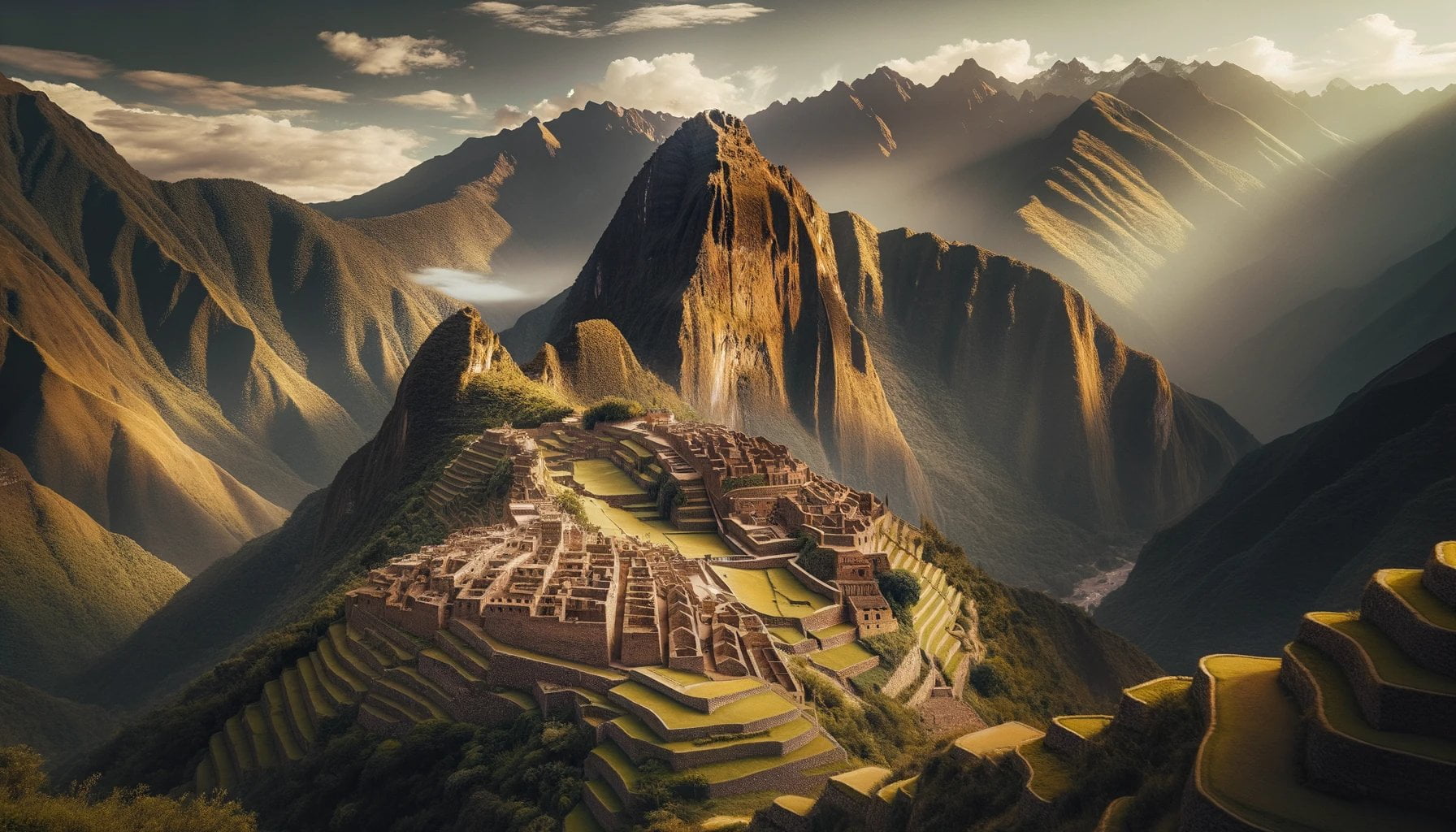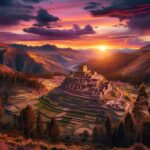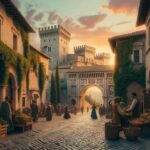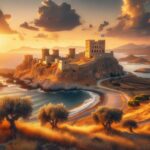Step into the captivating world of ancient Peru, where an extraordinary city lies waiting to be explored. In this article, we delve into the enigmatic ruins of an ancient city tucked away amidst the breathtaking landscapes of Peru. Brace yourself for a journey back in time as we embark on a quest to unravel the long-held secrets and discover the profound cultural significance locked within the walls of this ancient marvel. Through meticulous research and expert analysis, we aim to shed light on the captivating story of Peru’s ancient city and illuminate its enduring impact on present-day society. Join us as we venture into the heart of this archaeological wonder and witness the magic that lies within its ancient walls.
Key Takeaways:
- Machu Picchu is a mysterious city of the Incas, built in the middle of the 15th century.
- It is located about 50 miles from Cuzco, Peru, in the Andes Mountains.
- Machu Picchu is one of the few major pre-Columbian ruins that remain nearly intact.
- It was designated a UNESCO World Heritage site in 1983.
- The purpose of Machu Picchu is still unknown, but it is believed to have served as a royal retreat.
- Other ancient ruins in Peru include Chan Chan, the largest city of the pre-Columbian era.
- Peru is home to a wide selection of ancient ruins, with Machu Picchu being the most famous and spectacular.
Ancient City in Peru
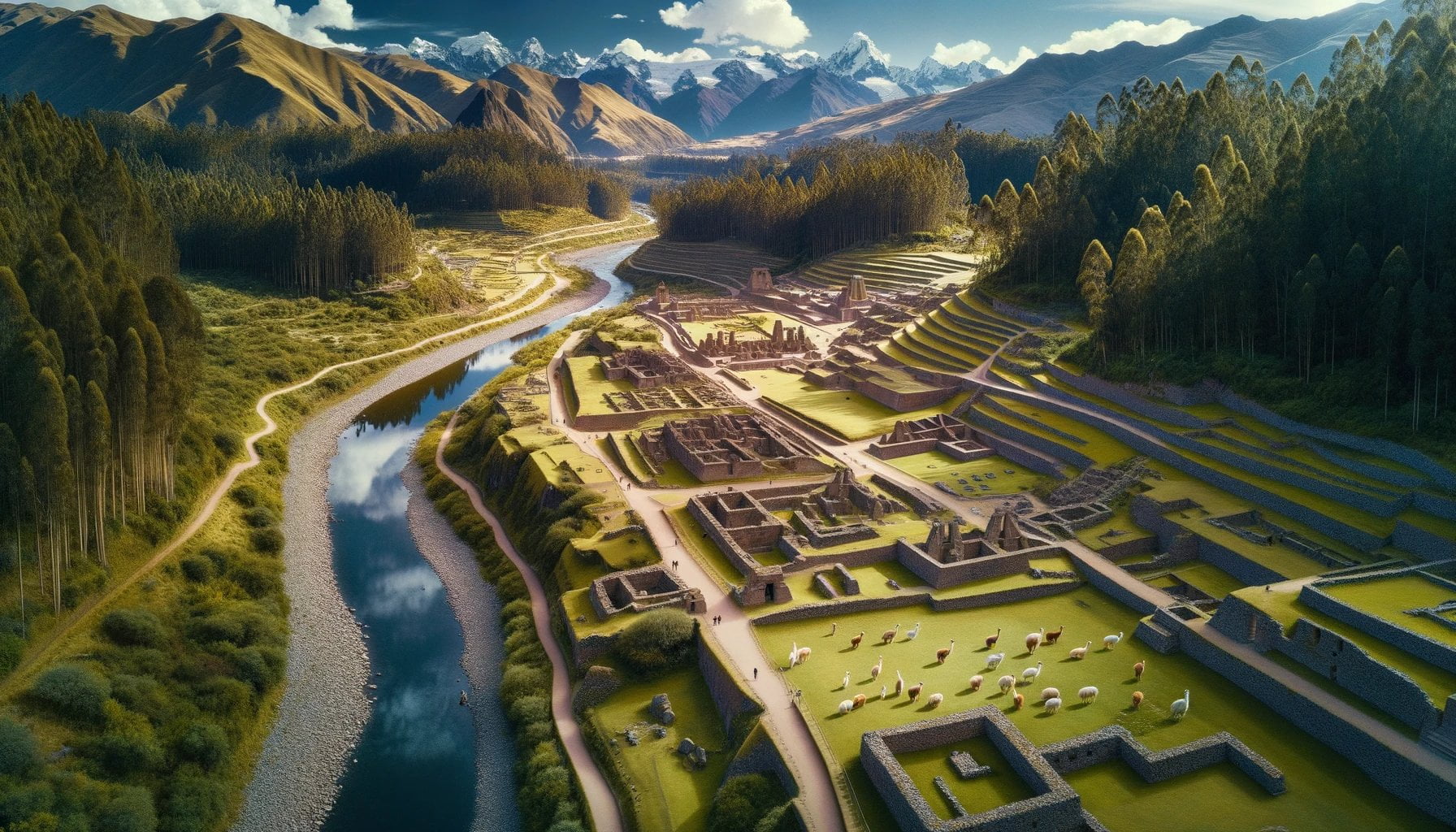
Welcome to the captivating world of ancient cities in Peru, where history intertwines with mystery and cultural significance. In this article, we will embark on an exploration of Peru’s remarkable ancient city, uncovering its mysteries, architectural marvels, and societal structures that continue to fascinate and inspire.
Machu Picchu: A Mysterious City of the Incas
Our journey begins with Machu Picchu, a mesmerizing ancient city nestled in the Andes Mountains of Peru. Built by the Inca civilization in the middle of the 15th century, this enigmatic city is shrouded in intrigue and wonder. Its Quechua name, “Old Mountain,” reflects the majestic beauty and breathtaking views that await those who dare to venture here.
Discovering the Significance
Why was Machu Picchu built? What purpose did it serve? These questions have puzzled researchers and historians for centuries. While its exact significance remains unknown, many believe that Machu Picchu served as a royal retreat for the Inca elite. Its remote location, surrounded by mountains and hidden from prying eyes, adds to its air of mystery.
Exploring the Architectural Marvels
As we delve deeper into Machu Picchu, we encounter an extraordinary display of Inca architectural prowess. The precision and skill with which the city was constructed are evident in its perfectly fitting stone walls, terraces, and intricate water channels. These architectural marvels not only dazzle the eye but also provide insight into the advanced engineering techniques employed by the Inca civilization.
The Cultural Legacy
Machu Picchu not only represents a remarkable architectural feat but also embodies the rich cultural heritage of the Inca people. The city’s layout, with its carefully planned sectors for residential, religious, and agricultural purposes, reflects the societal structures and values of the time. It serves as a testament to the Inca’s deep connection with nature and their ability to harmoniously coexist with their environment.
Pioneering Discoveries
In 1911, the first Western scholar, Hiram Bingham, set foot in Machu Picchu, forever changing our understanding of this ancient city. His findings ignited global interest in the site and sparked a wave of exploration and research that continues to this day. Through his pioneering efforts, Machu Picchu became known as a symbol of Peru’s rich historical and archaeological heritage.
Beyond Machu Picchu
While Machu Picchu shines as the crown jewel of ancient Peruvian ruins, there are countless other remarkable sites to explore. One such site is Chan Chan, the largest city of the pre-Columbian era. Its intricate adobe architecture and elaborate decorative motifs tell a story of the ancient Chimú civilization that once thrived in northern Peru.
Conclusion
As we conclude this journey through Peru’s ancient cities, it becomes clear that these archaeological wonders serve as gateways to the past, offering glimpses into the lives and legacies of civilizations long gone. The mystique, grandeur, and cultural significance of ancient cities like Machu Picchu and Chan Chan continue to captivate and inspire individuals from all walks of life, unveiling the rich tapestry of Peru’s history and its enduring impact on present-day society.
Note: The content provided in this article is for informational purposes only and is based on available research and historical interpretations.
- Ancient Naval Warfare – Explore the largest naval battle in ancient history and uncover the epic tales of triumph and defeat on the high seas.
- Egyptian Palace Architecture – Delve into the opulence and grandeur of ancient Egypt by discovering the remarkable palaces that once stood as symbols of power and prestige.
- Heartwarming Epitaphs for Ancient Dogs – Unearth touching epitaphs from the ancient world, a testament to the deep bond between humans and their loyal canine companions throughout history.
- Legendary Vietnamese Warriors – Embark on a journey through time and encounter the legendary figures who exemplified bravery and honor as ancient Vietnamese warriors.
- Prominent Egyptian Queens – Discover the influential queens of ancient Egypt who played pivotal roles in shaping the civilization’s rich and complex history.
- Faces and Stories of Ancient Syria – Immerse yourself in the captivating tales of ancient Syria as we unveil the names and stories of its remarkable people from the annals of time.
- Powerful Women of the Past – Uncover the stories of ancient queens and empresses, whose commanding presence and remarkable achievements continue to inspire awe and admiration.
- Ingenious Persian Inventions – Journey back in time to ancient Persia and witness the groundbreaking inventions and technological advancements that shaped the course of history.
- Remarkable Achievements of Ancient Rome – Marvel at the remarkable achievements of the ancient Romans, from their awe-inspiring architecture to their unprecedented contributions in law, literature, and more.
- Majestic Castles of Africa – Embark on a virtual tour of Africa’s ancient castles, remnants of a glorious past marked by epic battles, noble aspirations, and architectural marvels.
- Legends and Lore of Ancient Greece – Step into the realm of ancient Greece and uncover the captivating stories behind its magnificent castles, entwined with myths, legends, and heroic feats.
- Mysteries of Ancient Italy – Wander through the ancient streets of Italy and unravel the mysteries of its storied past, where each stone carries remnants of a bygone era filled with unparalleled art, culture, and heritage.
Architectural Marvels and Engineering Feats
Peru is home to some of the most awe-inspiring architectural marvels and engineering feats of ancient civilizations. In this article, we will delve into the remarkable structures and advancements achieved by the Inca Empire, showcasing their exceptional skills and ingenuity.
Machu Picchu: A Testament to Inca Engineering
One cannot discuss architectural marvels in Peru without mentioning the iconic sacred city of Machu Picchu. Perched 8,000 feet above sea level on a ridge in the Peruvian Andes, this royal estate is a true testament to Inca engineering prowess[^pbs].
The Incredible Stonework: One of the distinct features of Machu Picchu is its intricate stonework. Every stone in the walls fits together perfectly without the use of mortar, showcasing the Inca’s advanced understanding of geometry and construction techniques[^pbs]. The precision with which the stones align is a marvel in itself.
Terraced Fields and Water Management Systems: Machu Picchu also boasts impressive terraced fields, demonstrating the Inca’s mastery of agricultural engineering. These terraces not only supported crops but also prevented soil erosion on the steep slopes[^pbs]. Additionally, the advanced water management systems, including channels, fountains, and irrigation networks, ensured a sustainable water supply for both farming and daily life[^pbs].
Saksaywaman and Ollantaytambo: Testaments to Inca Fortification and Construction
Another architectural wonder of the Inca Empire is Saksaywaman, an ancient fortress located on a hill above the city of Cusco[^historyskills]. This massive structure showcases the Inca’s advanced engineering and construction techniques. Built using large stones that fit together seamlessly, Saksaywaman stands as a testament to the Inca’s mastery of stone construction[^historyskills].
Similarly, Ollantaytambo situated in the Sacred Valley of the Incas is a remarkable site that highlights the Inca’s prowess in stone craftsmanship. The town features impressive terraces, buildings, and water channels designed to withstand earthquakes, showcasing the Inca’s ingenious architectural feats[^historyskills].
The Qhapaq Ñan: A Masterful Inca Road System
The Inca road system, known as the Qhapaq Ñan, is yet another remarkable engineering marvel of the Inca Empire[^historyskills]. This extensive network of roads spanned over 20,000 miles and connected various parts of the empire. The Qhapaq Ñan showcased the Incas’ deep understanding of civil engineering and their ability to navigate diverse terrains, including mountains, deserts, and jungles[^historyskills].
Suspension Bridges: Ingenious Inca Construction
The Inca Empire was also known for its impressive suspension bridges[^historyskills]. These bridges were made using woven grass and were built to withstand the harsh conditions of the Andean region. These remarkable feats of engineering allowed the Incas to traverse canyons and rivers, demonstrating their expertise in designing structures that could withstand the forces of nature[^historyskills].
Key Takeaways:
- Machu Picchu is an iconic example of Inca architectural marvels, showcasing intricate stonework, terraced fields, and advanced water management systems.
- Saksaywaman and Ollantaytambo exhibit the Inca’s mastery of stone construction and fortification techniques.
- The Inca road system, the Qhapaq Ñan, demonstrates the Incas’ knowledge of civil engineering and their ability to connect diverse regions.
- The Inca’s use of suspension bridges highlights their ingenious engineering skills in adapting to the Andean environment.
Sources:
– [^pbs]: PBS – Lost City of the Incas: Machu Picchu
– [^historyskills]: History Skills – Inca Civil Engineering
Society and Daily Life in the Ancient City
Peru, with its rich cultural heritage and ancient civilizations, offers a fascinating glimpse into the society and daily life of its ancient cities. From Caral, one of the oldest cities in the Americas, to the enigmatic Machu Picchu, these ancient cities hold secrets waiting to be unraveled. In this article, we will delve into the intricacies of society and daily life in Peru’s ancient cities, shedding light on their significance and cultural impact.
The Diversity of Daily Life in Peru
Daily life in Peru varied greatly depending on social class and whether one lived in urban or rural settings. Distinct differences in social classes and their lifestyles shaped the fabric of ancient Peruvian society. The upper class enjoyed privileges and luxuries, while the lower classes engaged in more labor-intensive occupations.
Culturally Enriched Society
Peru’s ancient cities were the melting pots of diverse cultural traditions and customs. The people of these cities upheld rich spiritual traditions and deeply religious societies. Their customs and rituals are preserved through archaeological findings, offering insights into their beliefs and values.
Culinary Delights
Peruvian cuisine is known for its diversity and has become renowned worldwide. Ancient Peruvian cities were no exception, with locals indulging in a variety of culinary delights. Staple foods such as quinoa, corn, and potatoes were consumed, showcasing the agricultural expertise and innovation of these ancient civilizations.
Weather and Its Influence
The weather in Peru can vary significantly depending on the region, influencing the daily lives of its ancient inhabitants. The fertile coastal valleys provided favorable conditions for agriculture, while the highlands demanded adaptation to colder temperatures and higher altitudes.
Key Takeaways:
- Daily life in ancient Peru varied based on social class and urban/rural settings.
- Ancient Peruvian cities were culturally diverse and enriched, with deep spiritual traditions.
- Peruvian cuisine offered diverse culinary delights, showcasing the agricultural expertise of ancient civilizations.
- The weather in Peru varied by region and influenced daily activities.
- Society and daily life in ancient Peru offer valuable insights into the culture of these civilizations.
Sources:
- “Peru – Culture, Cuisine, Traditions” – Britannica [^1^]
- “Machu Picchu | History, Facts, Maps, Elevation” – Encyclopedia Britannica [^2^]
[^1^]: Peru – Culture, Cuisine, Traditions – Britannica
[^2^]: Machu Picchu | History, Facts, Maps, Elevation – Encyclopedia Britannica
Modern-day Impact and Preservation Efforts
In the heart of Peru lies the ancient city that continues to captivate the world with its allure – Machu Picchu. With its awe-inspiring architecture and cultural significance, this ancient Inca ruin has left an indelible mark on modern-day society. While Machu Picchu takes center stage as Peru’s top tourist attraction, it is just one of many ancient sites dotted across the country, each with its own unique story to tell. These ancient cities offer a glimpse into the rich history of Peru and the lasting impacts of its ancient civilizations.
Preserving Peru’s Cultural Heritage
Peru is home to an astonishing number of ancient sites, so much so that authorities struggle to protect them all. Despite this challenge, efforts are being made to ensure the preservation of Peru’s cultural heritage. One notable endeavor is the construction of a large-scale national museum that will provide a comprehensive space to showcase and protect the country’s archaeological treasures.
The ideal climate in Peru has also played a significant role in preserving these ancient ruins. With its dry desert areas and high-altitude regions, many of the structures have withstood the test of time, maintaining their intricate details and architectural marvels. From the perfectly fitting stone walls of Machu Picchu to the impressive fortifications of Saksaywaman and Ollantaytambo, Peru’s ancient cities have endured for centuries, thanks to nature’s gentle touch.
The Enduring Appeal of Machu Picchu
Machu Picchu holds a special place in Peru’s history and continues to make a modern-day impact. This ancient Inca citadel, discovered by Hiram Bingham in 1911, sparked global attention and led to further exploration and research. Today, it is recognized as a UNESCO World Heritage site, drawing countless visitors who marvel at its beauty and wonder.
The tourism industry surrounding Machu Picchu provides economic opportunities for local communities. It has created jobs, boosted the economy, and allowed for infrastructural development, catering to the needs of travelers from all around the world. The preservation and maintenance of this ancient city have become a top priority to ensure its continued accessibility and enjoyment for future generations.
Beyond Machu Picchu: Peru’s Hidden Gems
While Machu Picchu takes center stage, it is vital to recognize the other remarkable ancient cities scattered across Peru. For instance, Chan Chan, the largest city of the pre-Columbian era, offers a glimpse into the ancient Chimu civilization. This vast archaeological site displays intricate architectural details and provides valuable insights into the lives and legacies of civilizations long gone.
The enduring influence of ancient Peruvian culture can also be felt in modern-day society. The Inca’s connection with nature, exemplified by their city planning and agricultural practices, continues to inspire environmental conservation efforts in Peru. From sustainable farming practices to preserving natural resources, the lessons learned from ancient Peruvian civilizations resonate in the present.
Key Takeaways:
- Peru has an abundance of ancient sites, but protecting and preserving them is a challenge.
- Machu Picchu is a major tourist attraction, contributing to the economy and local communities.
- Efforts are being made to construct a national museum for the preservation of Peru’s archaeological treasures.
- Peru’s ideal climate has helped preserve ancient ruins, showcasing their intricate details and architectural wonders.
- Other ancient cities in Peru, such as Chan Chan, offer valuable insights into the lives and legacies of past civilizations.
- Ancient Peruvian culture continues to inspire modern conservation efforts, particularly in the realm of environmental sustainability.
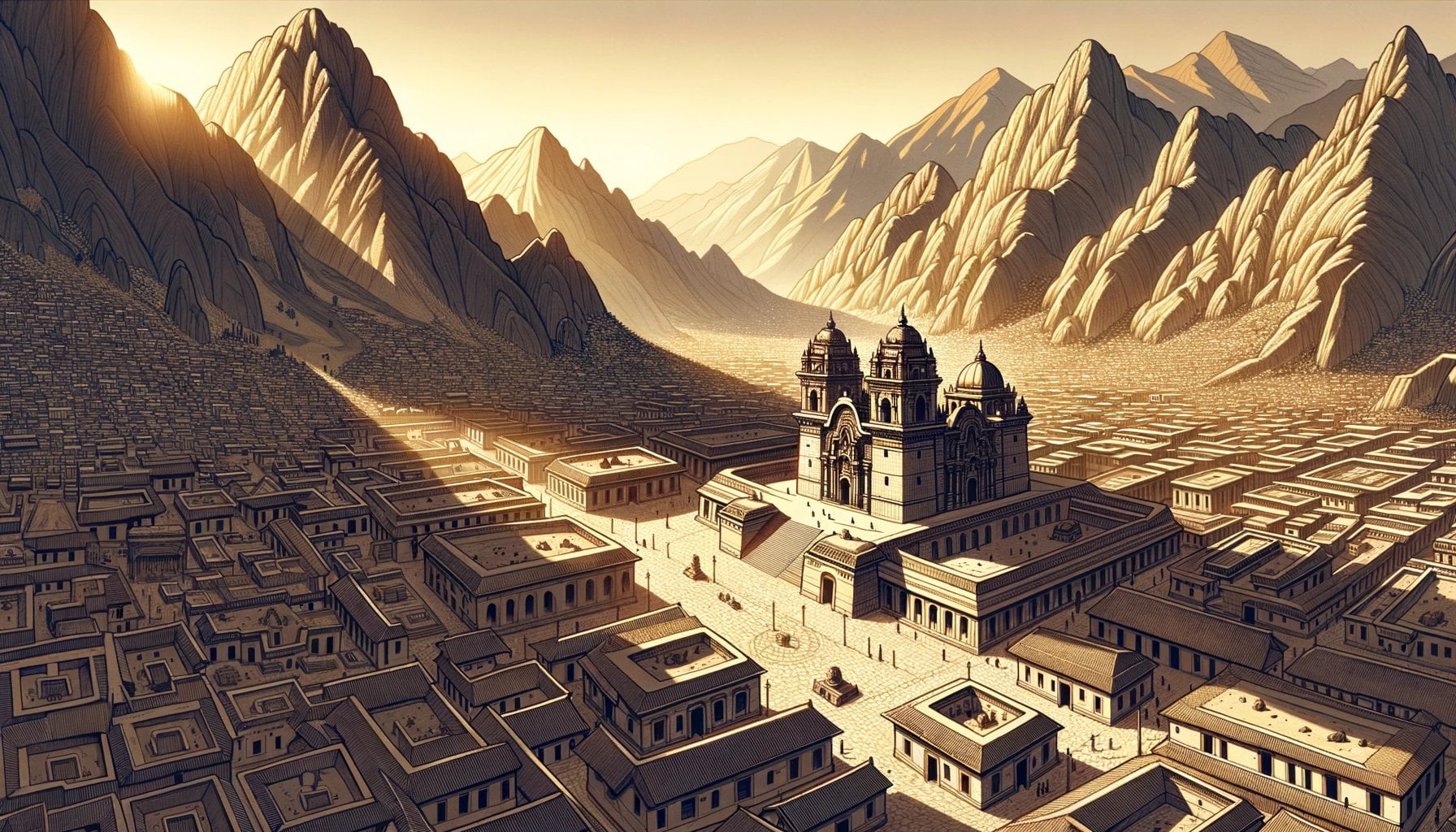
FAQ
Q1: What is Machu Picchu?
A1: Machu Picchu is an ancient Inca city located in Peru, built in the middle of the 15th century. It is considered one of the most iconic symbols of the Inca Empire and is often referred to as the “Lost City” of the Incas.
Q2: Where is Machu Picchu located?
A2: Machu Picchu is located approximately 50 miles from Cuzco, Peru, in the Cordillera de Vilcabamba of the Andes Mountains.
Q3: Who built Machu Picchu?
A3: Machu Picchu was built by the Inca, a civilization that lived in Peru around 600 years ago.
Q4: What is the purpose of Machu Picchu?
A4: The purpose of Machu Picchu is still unknown, although it is believed to have served as a royal retreat for Inca rulers.
Q5: When was Machu Picchu discovered?
A5: Machu Picchu was discovered by Yale professor Hiram Bingham in 1911.
- Sept 31 Myth: Unveiling Calendar Secrets - March 18, 2025
- How Long & Till December 18, 2025: Accurate Countdown Guide - March 18, 2025
- Discover Japanese Artists: A Complete History - March 18, 2025
